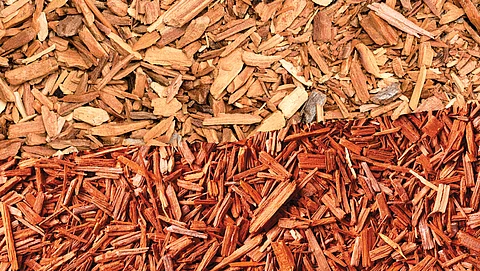

In 2009, when K Sharanappa planted 1,000 sandalwood saplings across his 2.8-hectare (ha) farm, he was not just growing trees—he was staking his future on a once-forbidden trade. Indian sandalwood (Santalum album), one of the country’s most commercially valuable tree species, is worth its weight in gold. High-quality Indian sandalwood fetches up to `78 lakh per tonne (1,000 kg), earning it the nickname “dollar-earning parasite” in international markets. For Sharanappa, a resident of Karnataka’s Adapura village in Koppal district, the plan was simple: in 15 years, the trees would mature, earning him a projected Rs 4 crore—an amount several hundred times his modest salary as a police officer with the state government. “I timed it with my retirement in 2023. I would be financially secure and my sons would inherit a thriving business,” he says. “But it has now become a burden,” he adds. His voice, once filled with hope, now carries the weight of disillusionment.
Sharanappa is among the first group of sandalwood growers in Karnataka, home to almost 60 per cent of India’s natural extent of sandalwood, according to a study published in Discover Applied Sciences in November 2024. He took up cultivation after Karnataka loosened its iron grip on the timber’s trade two decades ago. In 1792, the erstwhile Mysore state declared it as the “Royal Tree”. Since then, the harvesting and sale of sandalwood remained a government monopoly. Even if a tree grew naturally on private land, the owner had no rights over it—yet was responsible for its protection.
That changed in 2001 when the Karnataka Forest (Amendment) Act was passed, allowing private individuals to cultivate sandalwood. But there was a catch—the government still controlled the trade. A small breakthrough came in 2008 when Karnataka allowed two state-backed agencies, Karnataka Soaps and Detergents Limited (KSDL) and Karnataka State Handicrafts Development Corporation (KSHDC), to buy sandalwood directly from private growers. A major shift came in 2022, when the Karnataka Forest (Amendment) Rules finally allowed farmers to sell their produce to any “entity other than State Government or to any State Government undertaking”. Karnataka has also introduced various schemes such as Sirichandana Vana and Krishi Aranya Yojana, along with initiatives for raising seedlings for public distribution, supported by the horticulture department, states the 2024 study.
While India has always regulated the production and sale of sandalwood, it never imposed restrictions on sandalwood distillers—who extract the tree’s highly valued heartwood oil—or craftsmen using the wood for carvings. This policy gap had fuelled a thriving illegal trade. By easing restrictions, the Karnataka government aimed to curb smuggling and revive India’s dwindling sandalwood population.
The state had just 4,360 harvestable sandalwood trees in the late 1900s, according to a 2022 study by the New Phytologist Foundation. In 1997, the International Union for Conservation of Nature (IUCN) classified Indian sandalwood as “vulnerable”, warning that trees exceeding 30 cm in diameter had become rare. Today, about 130,000 mature sandalwood trees remain across Karnataka, Tamil Nadu and Kerala, says the 2022 report. India’s annual sandalwood production has also plummeted from 4,000 tonnes in the 1960s to just 350 tonnes in 2014, as per a 2024 study by Keladi Shivappa Nayaka University of Agricultural and Horticul-tural Sciences in Shivamogga, Karnataka. The shortfall has forced India to import nearly 20,000 kg of sandalwood—worth Rs 100 crore—from Australia between 2019 and 2024, it adds.
Though Karnataka lifted the ban on farming of sandalwood in 2001, “there is no official estimate of how many farmers are growing sandalwood,” says Rajesh Kaleje, head of Bengaluru-based Institute of Wood Science and Technology (IWST), known for sandalwood research under the Indian Council of Forestry Research and Education, Dehradun. “We only find out when someone seeks permission to harvest and we visit the farm to verify,” he adds. K Amaranarayana, a sandalwood grower and the president of non-profit Karnataka Sandalwood and Farm Forestry Growers’ Association, says that there are 550 sandalwood farmers with the network. According to KSDL, at least 1,000 farmers across Karnataka, Tamil Nadu and Kerala have entered sandalwood farming. Most of them now have mature trees, waiting to see if their trust in the timber will pay off.
Of the 1,000 saplings Sharanappa had planted, only 650 have survived. Worse, an inspection in 2024 revealed that the trees had not developed significant heartwood, the dense core that gives sandalwood its commercial value. A sandal-wood tree begins maturing in eight to 10 years, but the real prize—the heartwood, rich in fragrant oil—forms only from the 10th year onwards. An IWST scientist tells Down To Earth (DTE) on condition of anonymity that heartwood needs at least 20-25 years to develop fully. The denser the heartwood, the higher...
This was first published in the 16-31 March, 2025 print edition of Down To Earth